Sahar Sobhani is one of Iran’s most proclaimed young illustrators and designers. She recently illustrated 23 places in Iran for the Aravas company. On her Instagram page she explains her work:
Iran is a beautiful and historical country. if you want to travel to Iran, you have the change to visit most awesome places ever. I’ve designed some of the most famous of them and you can see them in the continuation.
I love you all
I share you her works with a short description. Source is Wikipedia.
Abyaneh, Isfahan
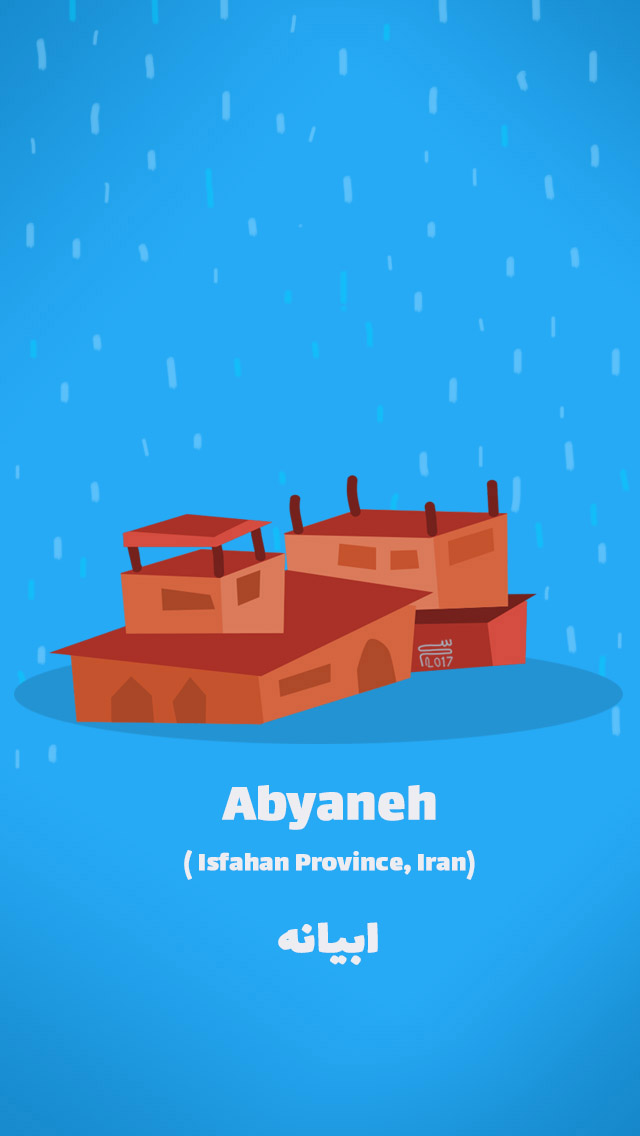
Abyaneh is a village in Barzrud Rural District, in the Central District of Natanz County, Isfahan Province, Iran. At the 2006 census, its population was 305, in 160 families. Characterized by a peculiar reddish hue, the village is one of the oldest in Iran, attracting numerous native and foreign tourists year-round, especially during traditional feasts and ceremonies.
Arg-e Bam, Kerman

The Arg-e Bam was the largest adobe building in the world, located in Bam, a city in Kerman Province of southeastern Iran. It is listed by UNESCO as part of the World Heritage Site “Bam and its Cultural Landscape”. The origin of this enormous citadel on the Silk Road can be traced back to the Achaemenid Empire (sixth to fourth centuries BC) and even beyond. The heyday of the citadel was from the seventh to eleventh centuries, being at the crossroads of important trade routes and known for the production of silk and cotton garments.
The entire building was a large fortress containing the citadel, but because of the impressive look of the citadel, which forms the highest point, the entire fortress is named the Bam Citadel. more info: UNESCO
Babak Fort, East Azerbaijan
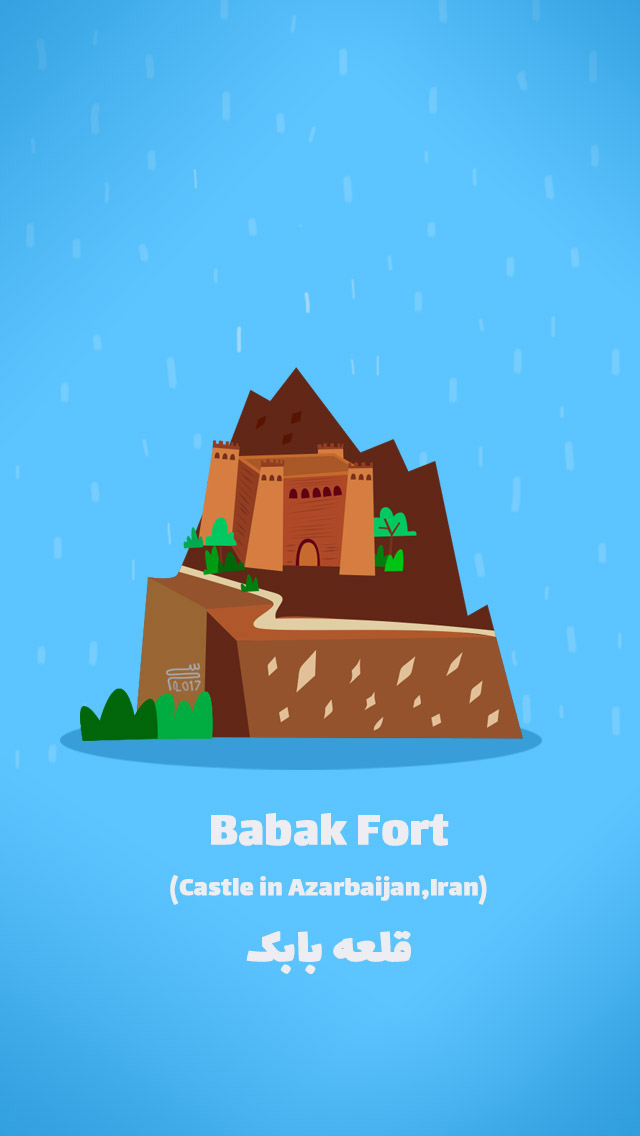
Pāpak Fort or Babak Castle also known as the Immortal Castle or Republic Castle, is a large citadel and National Symbol of Iranians on the top of a mountain in the Arasbaran forests, which is located 6 km southwest of Kalibar City in northwestern Iran. It has been identified as the stronghold of Pāpak Khorramdin, the leader of the Khurramites in Azarbaijan who fought the Islamic caliphate of Abbassids. Iranian Azarbaijanis gather at Babak Castle during the first weekend in July for the annual commemoration of Babak Khorramdin.
Dome of Soltaniyeh, Zanjan
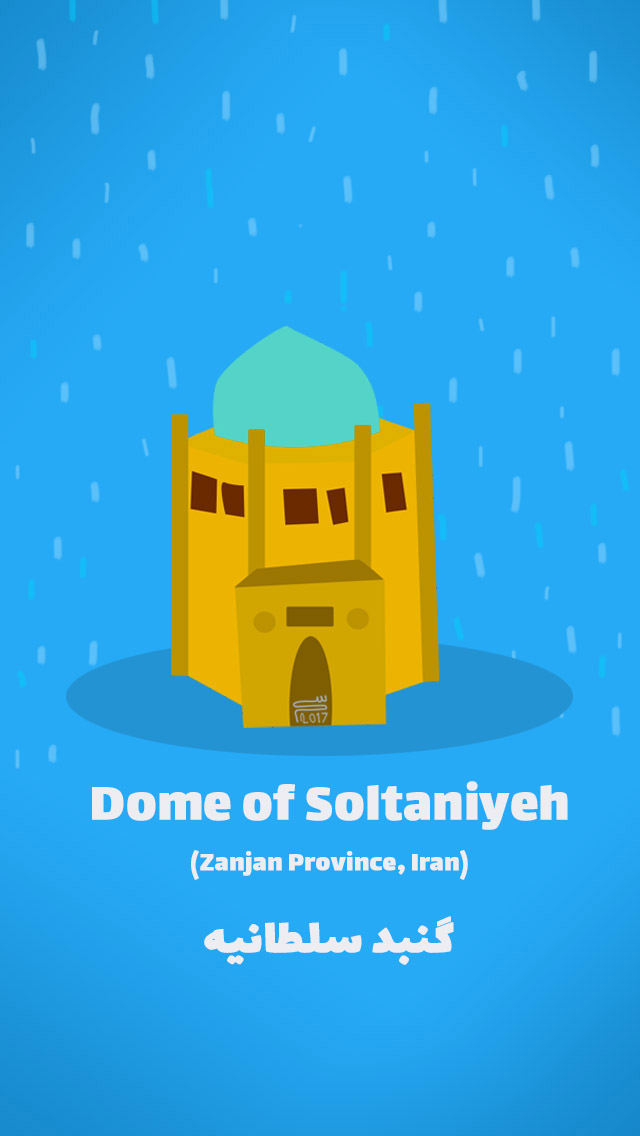
The central magnet of Soltaniyeh’s several ruins is the Mausoleum of Il-khan Öljeitü also known as Muhammad Khodabandeh, traditionally known as the Dome of Soltaniyeh in Soltaniyeh city, Zanjan Province. The estimated 200 ton dome stands 49 meters (161 ft) tall from its base, and is currently undergoing extensive renovation.
Falak ol Aflak Castle – Lorestan
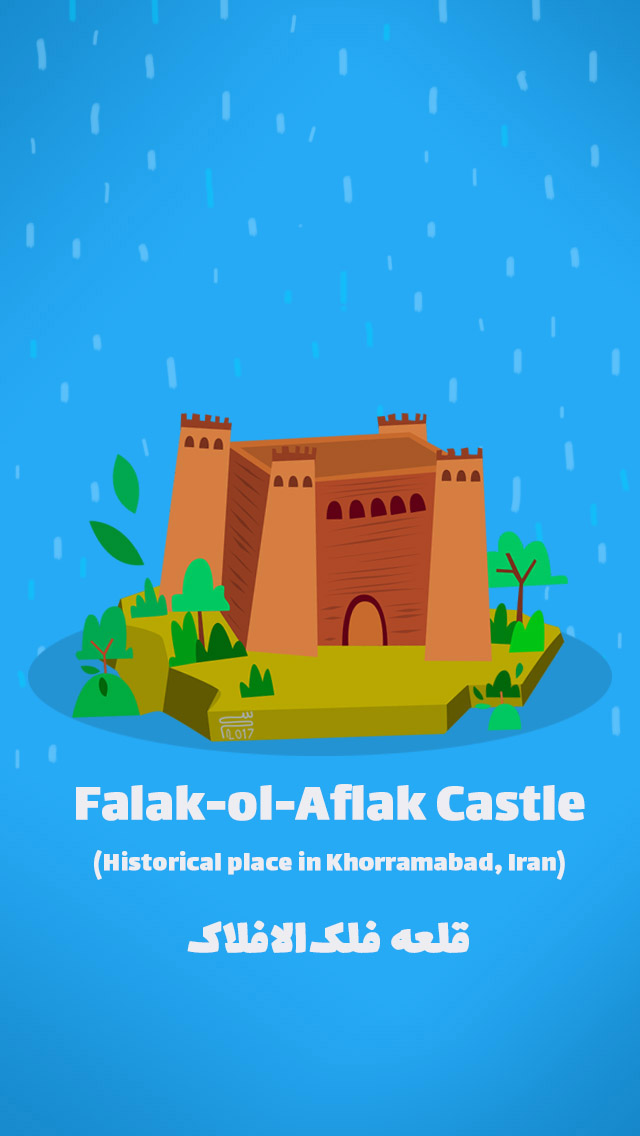
Falak-ol-Aflak Castle (Dež-e Shāpūr-Khwāst, in ancient times known as Dežbār as well as Shāpūr-Khwāst) is a castle situated on the top of a large hill with the same name within the city of Khorramabad, the regional capital of Lorestan province, Iran. This gigantic structure was built during the Sassanid era (224–651).
The Khoramabad River runs past the eastern and south-western side of the Falak-ol-Aflak hill providing the fortress some natural protection on those sides. Today, the western and northern sides of the hill are bordered by the residential districts of Khorramabad.
Fin Garden, Kashan, Isfahan
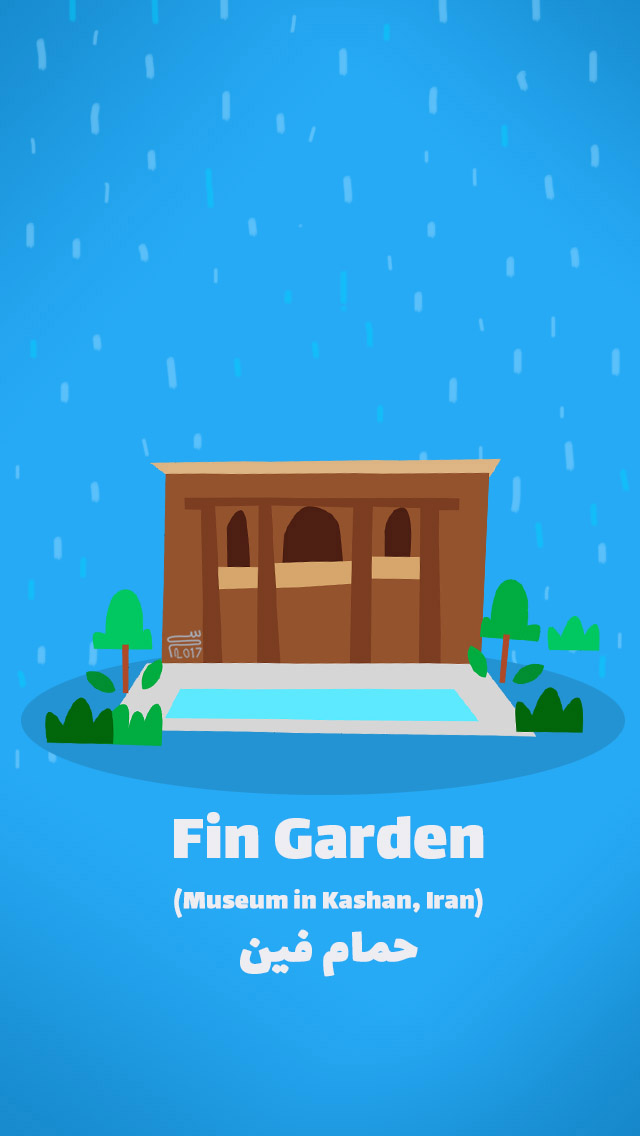
Fin Garden (Bagh-e Fin) located in Kashan, Iran, is a historical Persian garden. It contains Kashan’s Fin Bath, where Amir Kabir, the Qajarid chancellor, was murdered by an assassin sent by King Nasereddin Shah in 1852. Completed in 1590, the Fin Garden is the oldest extant garden in Iran.
The garden covers 2.3 hectares with a main yard surrounded by ramparts with four circular towers. In keeping with many of the Persian gardens of this era, the Fin Garden employs a great many water features. These were fed from a spring on a hillside behind the garden, and the water pressure was such that a large number of circulating pools and fountains could be constructed without the need for mechanical pumps.
Goharshad Mosque, Mashhad

Goharshad Mosque is a former free standing mosque in Mashhad of the Razavi Khorasan Province, Iran, which now serves as one of the prayer halls within the Imam Reza shrine complex.
It was built by the order of Empress Goharshad, the wife of Shah Rukh of the Timurid Dynasty in 1418 CE. The architect of the edifice was Ghavameddin Shirazi, who is responsible for so many of Shah Rukh’s great buildings, with the architectural and decorative manpower supplied from Shiraz and Isfahan.
Lahijan Telecabin – Gilan
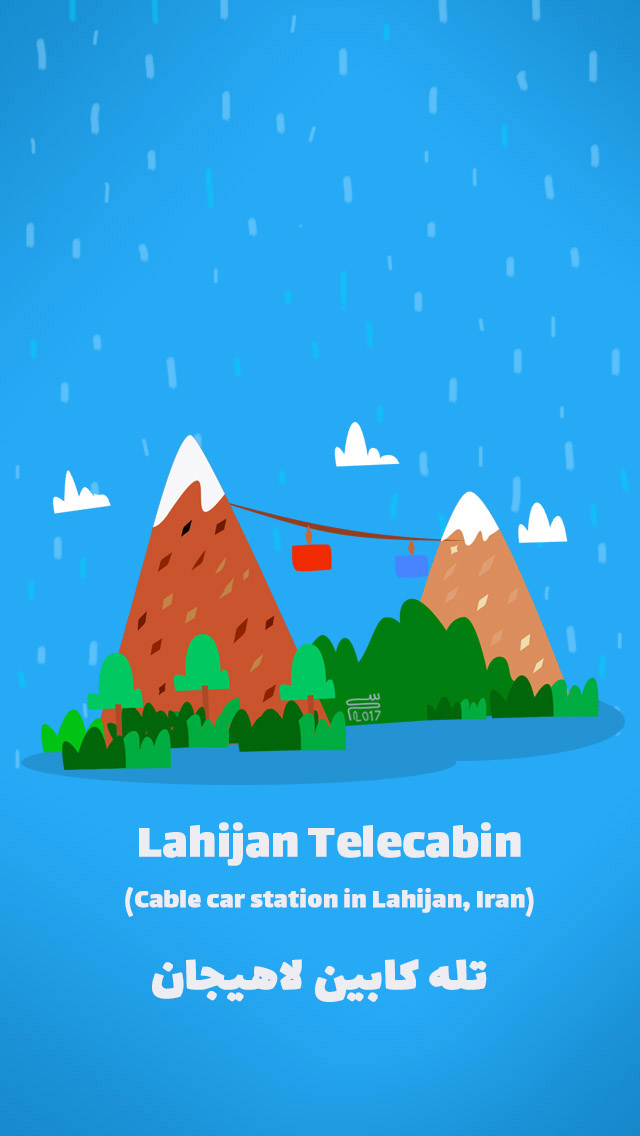
Masuleh, Gilan
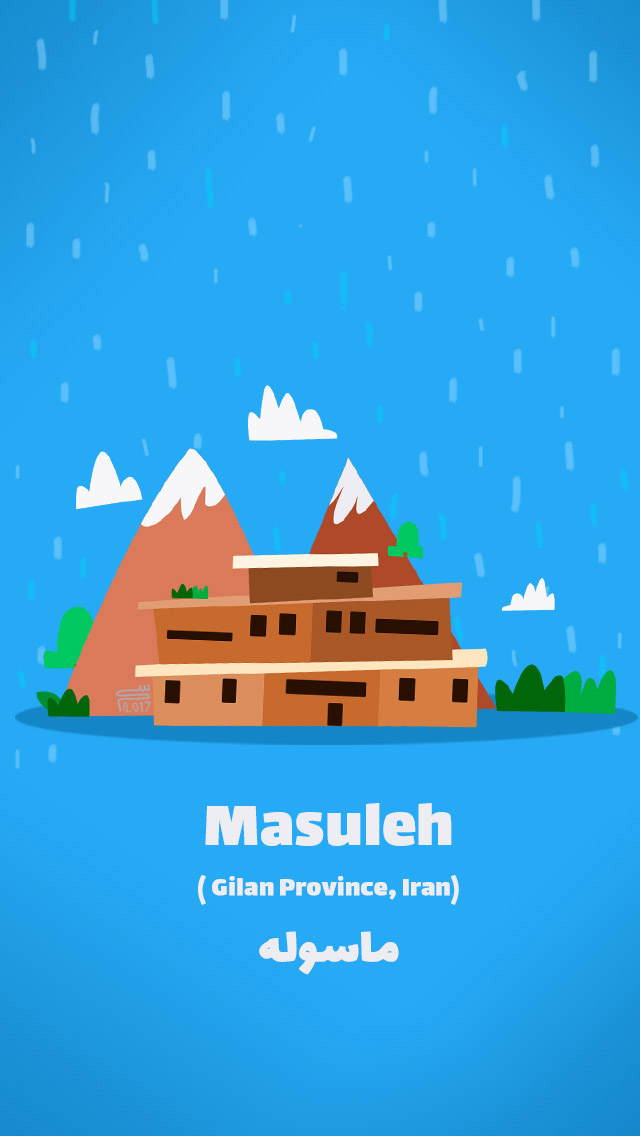
Masuleh is a city in and the capital of Sardar-e Jangal District, in Fuman County, Gilan Province, Iran. Historical names for the city include Māsalar and Khortāb. It was founded in the 10th century AD.
Although it has been written that the community was established around 10 AD, the province of Gilan has a long history. The first village of Masuleh was established around 1006 AD, 6 km northwest of the current city, and it is called Old-Masuleh (Kohneh Masuleh in Persian). People moved from Old-Masuleh to the current city because of pestilence and attacks from neighbouring communities.
Masouheh-Rood-Khan is the river passing through the city, with a waterfall located just 200 meters away from the village. It’s cut-off by snow during the winter months. Fog is the predominant weather feature of Masuleh.
Mount Damavand, Tehran
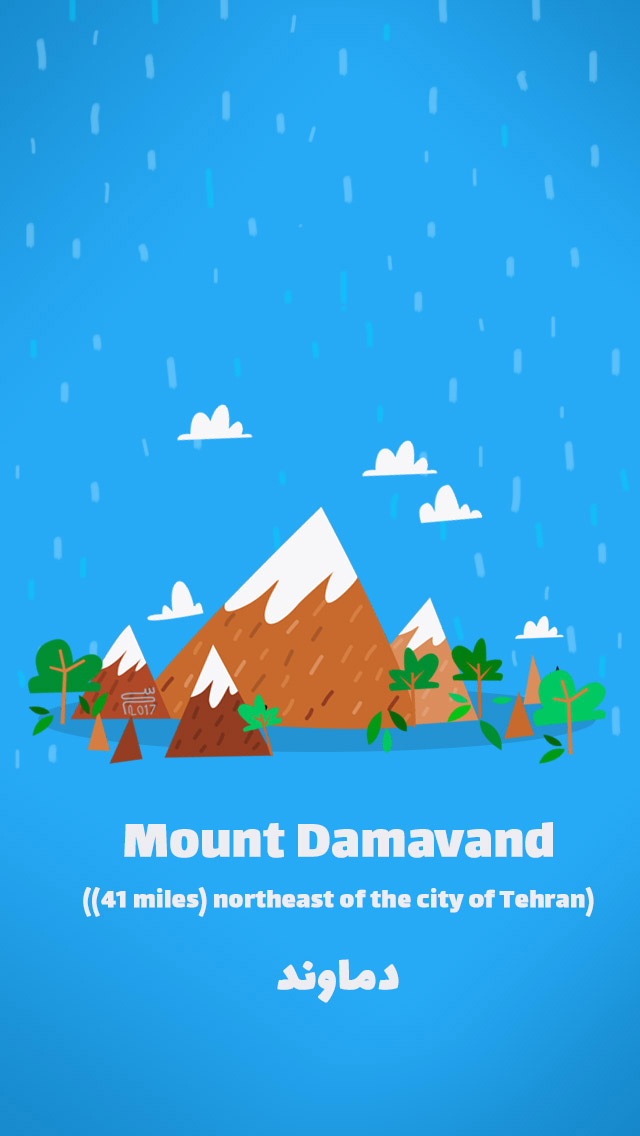
Mount Damāvand a potentially active volcano, is a stratovolcano which is the highest peak in Iran and the Middle East, and the highest volcano in Asia; the Kunlun Volcanic Group in Tibet is higher than Damāvand, but are not considered to be volcanic mountains. Damāvand has a special place in Persian mythology and folklore. It is in the middle of the Alborz range, adjacent to Varārū, Sesang, Gol-e Zard, and Mīānrūd. It is near the southern coast of the Caspian Sea, in Amol County, Mazandaran Province, 66 kilometres (41 miles) northeast of the city of Tehran.
Mount Damāvand is the 12th most prominent peak in the world, and the second most prominent in Asia after Mount Everest. It is the highest volcanic mountain in Asia, and part of the Volcanic Seven Summits mountaineering challenge.
Persepolis, Fars
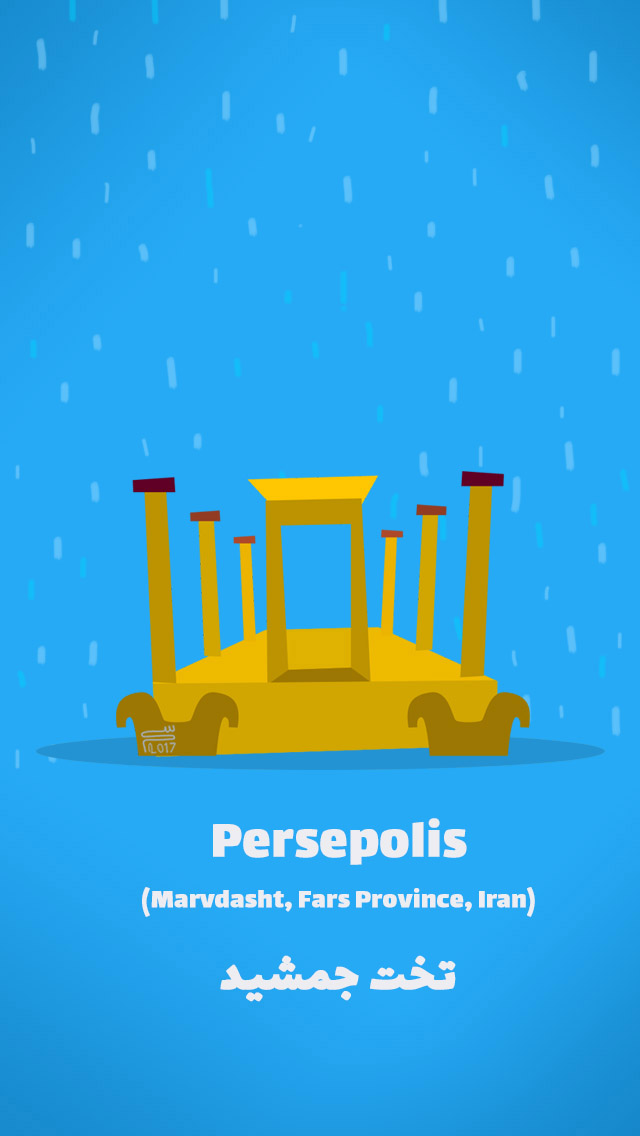
Persepolis (Greek: Persépolis; “the Persian city”) or Pārsa also known as Takht-e-Jamshid (“Throne of Jamshid”), was the ceremonial capital of the Achaemenid Empire (ca. 550–330 BC).
Persepolis is situated 60 km northeast of the city of Shiraz in Fars Province, Iran. The earliest remains of Persepolis date back to 515 BC. It exemplifies the Achaemenid style of architecture. UNESCO declared the ruins of Persepolis a World Heritage Site in 1979. more info: UNESCO
Quran Gate, Shiraz, Fars
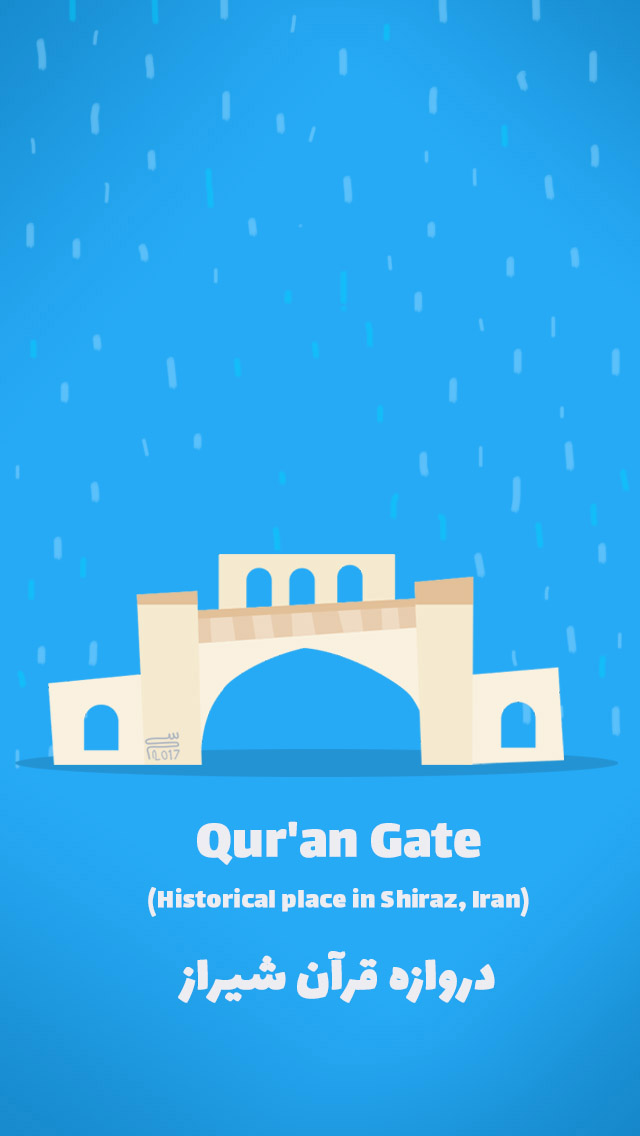
It is located at the northeastern entrance of the city, on the way to Marvdasht and Isfahan, between Baba Kouhi and Chehel Maqam Mountains near Allah-O-Akbar Gorge.
The Gate was first built during the reign of ‘Adud ad-Dawla. By the time of the Zand dynasty, it had sustained a lot of damage, so it was restored and a small room on top was added, in which were kept hand-written Qur’āns by Sultan Ibrahim Bin Shahrukh Gurekani. The two Qur’āns are known as Hifdah-Man.[Travelers passing underneath the gates were believed to receive the blessing of the Holy Book as they began their trip or journey from Shiraz.
During the Qajar dynasty, the gate was damaged by multiple earthquakes; it was later restored by Mohammad Zaki Khan Nouri.[1] In 1937 the two Qur’āns were taken from the gate and were taken to the Pars Museum in Shiraz, where they remain today. In 1949 the arch of the gate was restored by Hosein Igar, a merchant also known as E’temad Al-Tejar.
Today the gates are part of a city park where Shirazian relax and picnic during their leisure hours.
Shah Cheragh, Shiraz, Fars
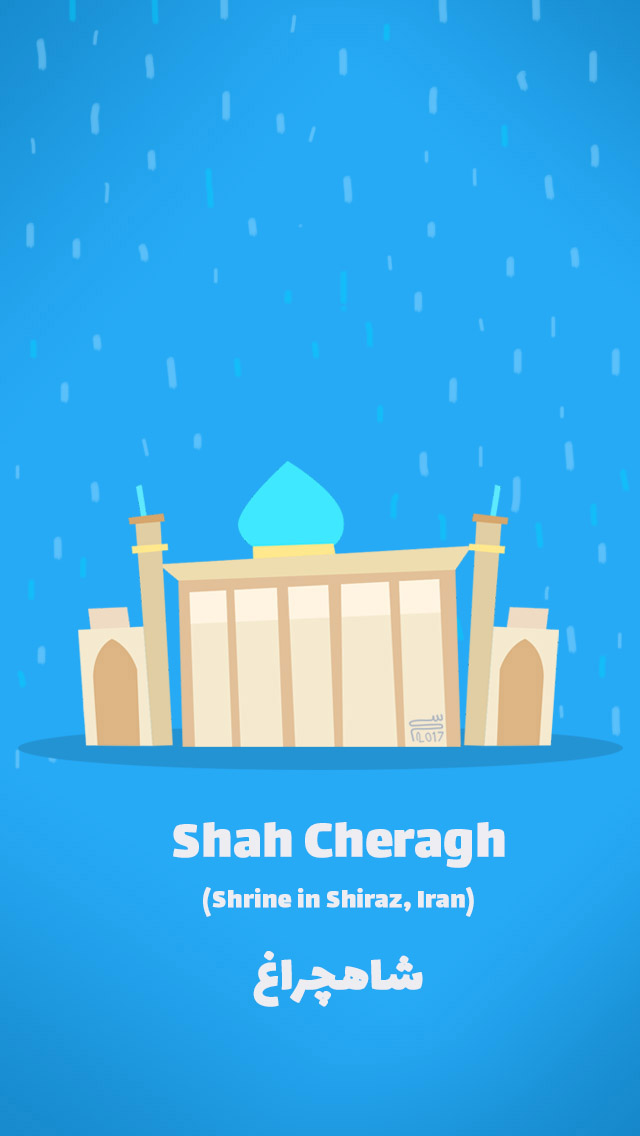
Shāh Chérāghv is a funerary monument and mosque in Shiraz, Iran, housing the tomb of the brothers Ahmad and Muhammad, sons of Mūsā al-Kādhim and brothers of ‘Alī ar-Ridhā (Imam Reza). The two took refuge in the city during the Abbasid persecution of Shia Muslims. The tombs became celebrated pilgrimage centres in the 14th century when Queen Tashi Khatun erected a mosque and theological school in the vicinity.
Shahr-e Sukhteh, Sistan and Baluchestan
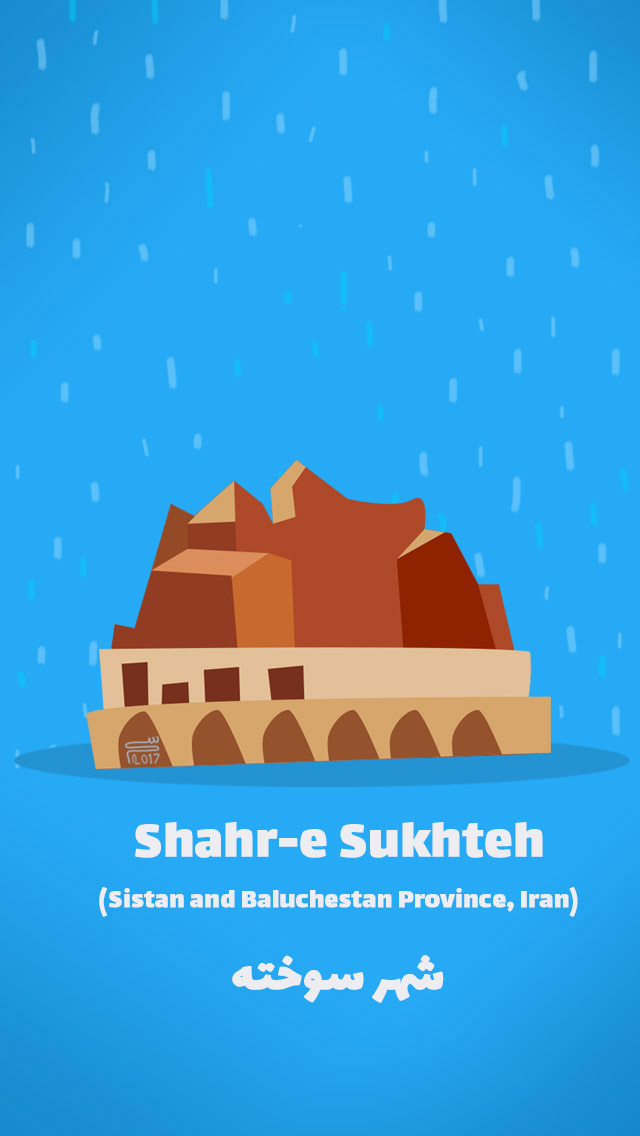
Shahr-e Sūkhté (meaning “Burnt City”), also spelled as Shahr-e Sukhteh and Shahr-i Shōkhta, is an archaeological site of a sizable Bronze Age urban settlement, associated with the Jiroft culture. It is located in Sistan and Baluchistan Province, the southeastern part of Iran, on the bank of the Helmand River, near the Zahedan-Zabol road. It was placed on the UNESCO World Heritage List in June 2014.
The reasons for the unexpected rise and fall of the Burnt City are still wrapped in mystery. Artifacts recovered from the city demonstrate a peculiar incongruity with nearby civilizations of the time and it has been speculated that Shahr-e-Sukhteh might ultimately provide concrete evidence of a civilization east of prehistoric Persia that was independent of ancient Mesopotamia. more info: UNESCO
Shams-ol Emareh, Tehran
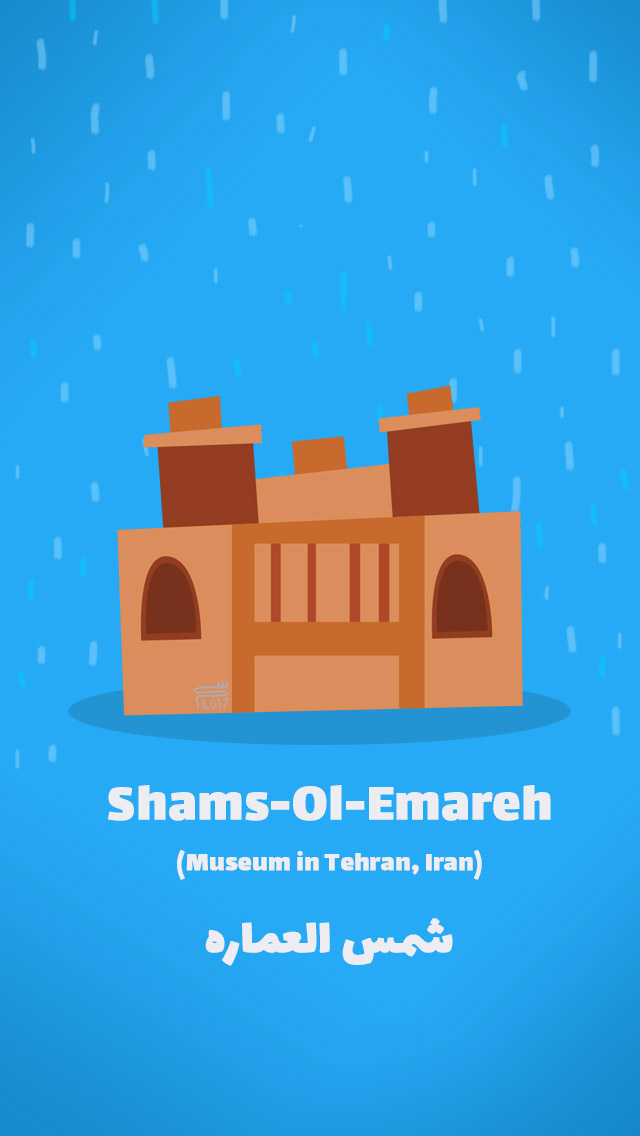
The Edifice of the Sun is considered the most stunning structure of the Golestan Palace. The idea of building a tall structure came to Nasser ed Din Shah who wanted a structure from which he could have panoramic views of the city.
Designed by Moayer ol Mamalek, construction on this building began in 1865 and was completed two years later. Its architect was Ali Mohammad Kashi. The building has two identical towers. The exterior views have multiple arches, intricate tile work and ornate windows. This building’s two towers are in fact small versions of the Safavid viewing palace of Ālī Qāpū in Isfahan.
Tochal Complex, Tehran
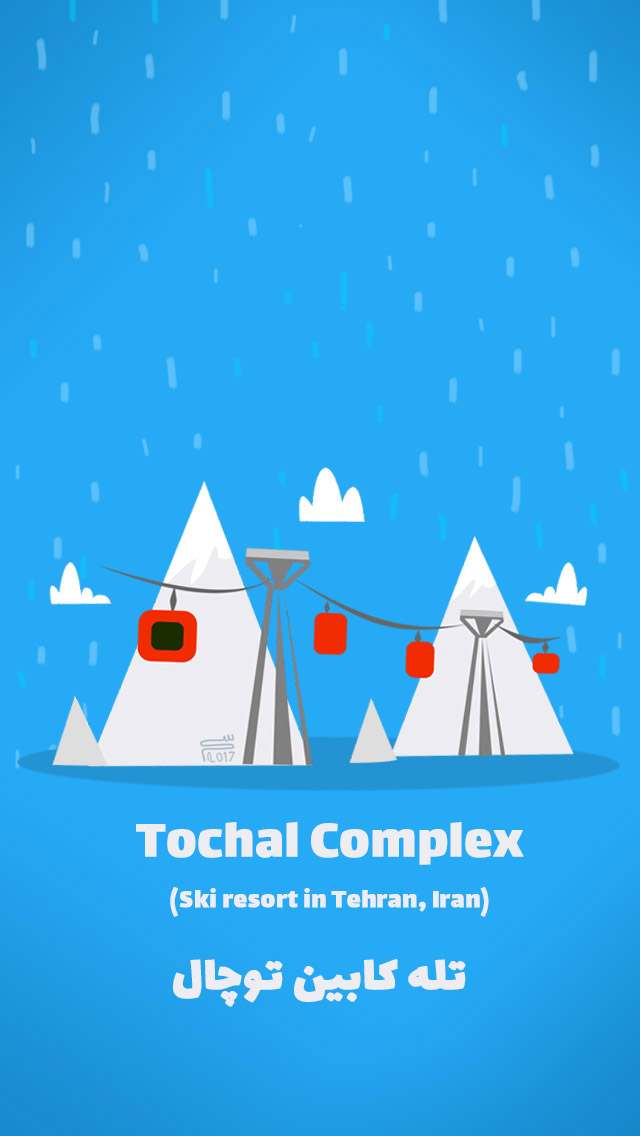
Tochal Telecabin is one of the world’s longest gondola lift lines with a length of 7500 m. The project started in 1974 and has been open to the public since 1978. It starts at the Velenjak valley in the north of Tehran at an altitude of 1900 m. and ends at the last station at an altitude of 3740 m., near the main ridge of Mount Tochal. This gondola lift is used for accessing ski resorts and other recreational centers on the mountain. Beautiful landscape, mountain fresh air and a multitude of fresh water springs adds to the freshness of the area. With upgrading the safety standards of telecabin lines, families and sports people can enjoy the telecabin ride and other facilities with joy and pleasure.
Toghrul Tower, Rey, Tehran

Tuğrul Tower is a 12th-century monument, located in the city of Rey, Iran. Tuğrul Tower is near Rashkan Castle.
The 20 meters tall brick tower is the tomb of Seljuk ruler Tuğrul Beg, who died in Rey in 1063. Originally, like other monuments of its time, it was capped by a conical dome, which would have added to its height. The dome collapsed during an earthquake.
The thickness of the walls varies from 1.75 to 2.75 meters. The inner and outer diameters are 11 and 16 meters, respectively. The exterior shape is that of a polygon with 24 angles in its design, which is thought to contribute to the structure’s stability against tremors.
At the top of the tower Kufic inscriptions were originally observable. Naser al-Din Shah ordered some restorations to be made to the top part of the tower, which was collapsing in 1884.
Tomb of Baba Tahir, Hamedan
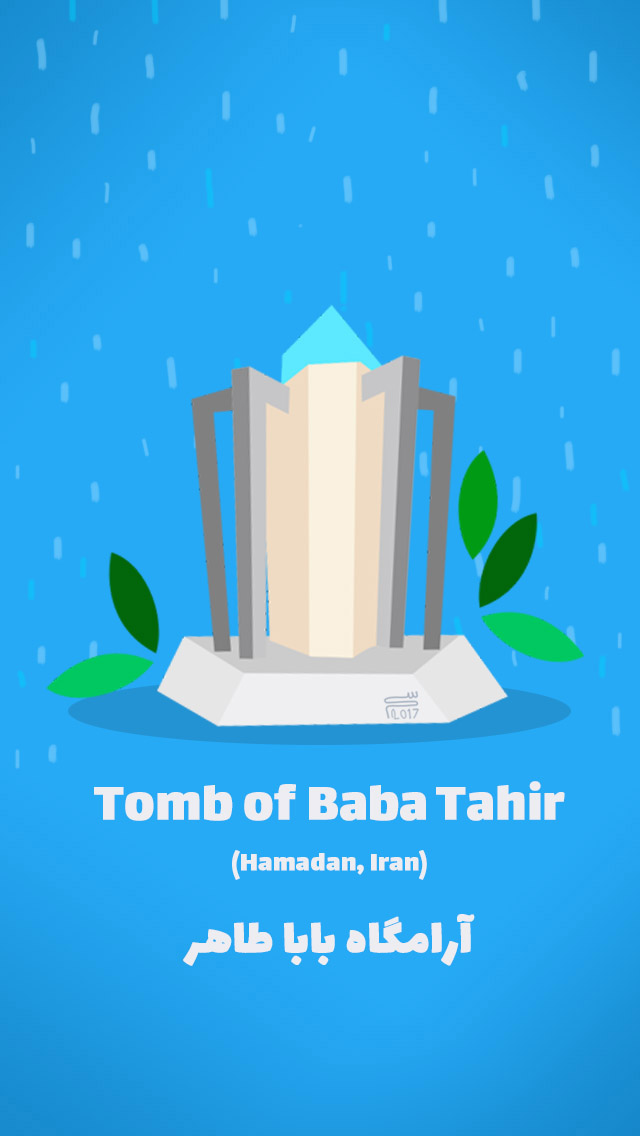
Baba Tahir was an 11th-century Persian poet. His poetry is written in Hamedani dialect of Persian language. According to L. P. Elwell-Sutton he probably wrote in the local dialect, which “Most traditional sources call it loosely Luri, while the name commonly applied from an early date to verses of this kind, Fahlaviyat, presumably implies that they were thought to be in a language related to the Middle Iranian dialect Pahlavi. Rouben Abrahamian however found a close affinity with the dialect spoken at the present time by the Jews of Hamadan.” According to The Cambridge History of Iran, Baba Tahir spoke a certain Persian dialect.
Tomb of Cyrus the great, Pasargadae , Fars
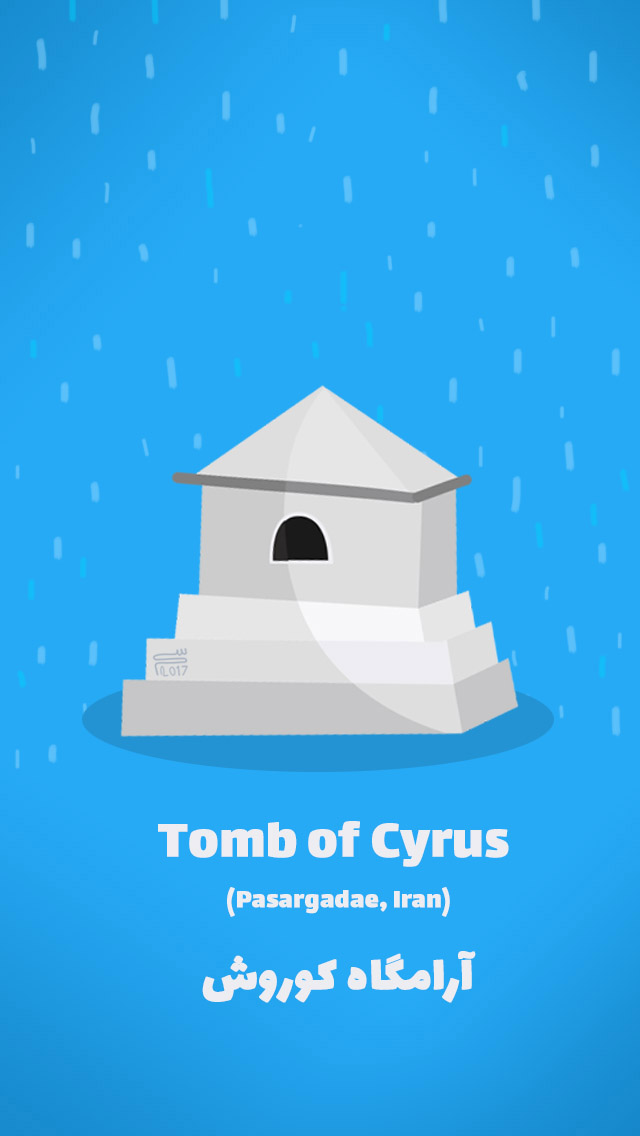
The Tomb of Cyrus is the monument of Cyrus the Great approximately 1 km southwest of the palaces of Pasargadae. According to Greek sources, it dates back to 559-29 B.C. The most extensive description based on a lost account by Aristobulus, who had accompanied Alexander the Great on his eastern campaign in the late 4th century B.C., is to be found in the Anabasis of Arrian (6.29). written in the 2nd century A.D
The design of Cyrus’ tomb is credited to Mesopotamian or Elamite ziggurats, but the cella is usually attributed to Urartu tombs of an earlier period. In particular, the tomb at Pasargadae has almost exactly the same dimensions as the tomb of Alyattes II, father of the Lydian King Croesus; however, some have refused the claim (according to Herodotus, Croesus was spared by Cyrus during the conquest of Lydia, and became a member of Cyrus’ court). The main decoration on the tomb is a rosette design over the door within the gable.[4] In general, the art and architecture found at Pasargadae exemplified the Persian synthesis of various traditions, drawing on precedents from Elam, Babylon, Assyria, and ancient Egypt, with the addition of some Anatolian influences. more info: UNESCO
Tomb of Hafez, Shiraz, Fars

Khwāja Shams-ud-Dīn Muḥammad Ḥāfeẓ-e Shīrāzī, known by his pen name Hafez (Ḥāfeẓ ‘the memorizer; the (safe) keeper’; 1315-1390), was a Persian poet who “lauded the joys of love and wine but also targeted religious hypocrisy.”
His collected works are regarded as a pinnacle of Persian literature and are to be found in the homes of most people in the Persian speaking world (mostly Afghanistan and Iran), who learn his poems by heart and still use them as proverbs and sayings. His life and poems have been the subject of much analysis, commentary and interpretation, influencing post-14th century Persian writing more than any other author.
Vakil Bazaar, Shiraz, Fars
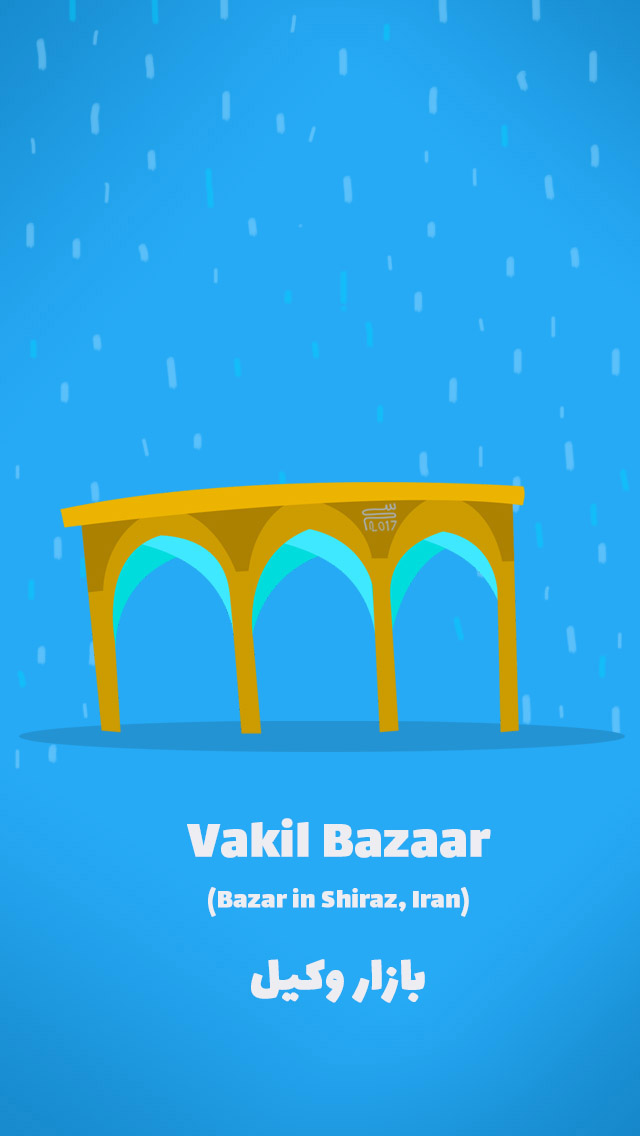
Vakil Bazaar is the main bazaar of Shiraz, Iran, located in the historical center of the city.
It is thought that the market originally was established by the Buwayhids in the 11th century AD, and was completed mainly by the Atabaks of Fars, and was renamed after Karim Khan Zand only in the 18th century.
The bazaar has beautiful courtyards, caravansarais, bath houses, and old shops which are deemed among the best places in Shiraz to buy all kinds of Persian rugs, spices, copper handicrafts and antiques. Like other Middle Eastern bazaars, there are a few mosques and Imamzadehs constructed beside or behind the bazaar.
Veresk Bridge, Mazandaran
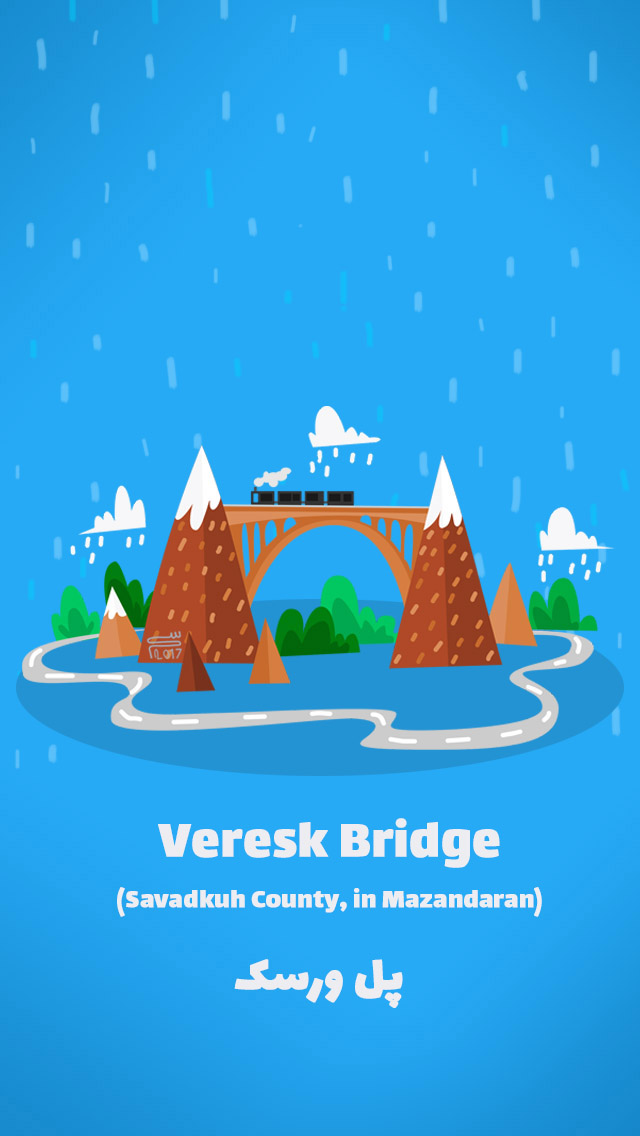
The Veresk bridge (Varisk) is a masonry arch bridge in northern Iran. It was constructed mostly by Austrians before World War II by leadership of an engineer named Walter Aigner, constructed during the reign of Reza Shah. It is located in the Veresk district of Savadkuh County, in Mazandaran province.
During World War II, it was known as the Pol-e Piroozi (“The bridge of victory”). The bridge stands 110 metres (360 ft) tall and its arch measures 66 metres (217 ft) long. The bridge serves the Trans-Iranian Railway network in Northern Iran.
Yazd Atash Behram, Yazd
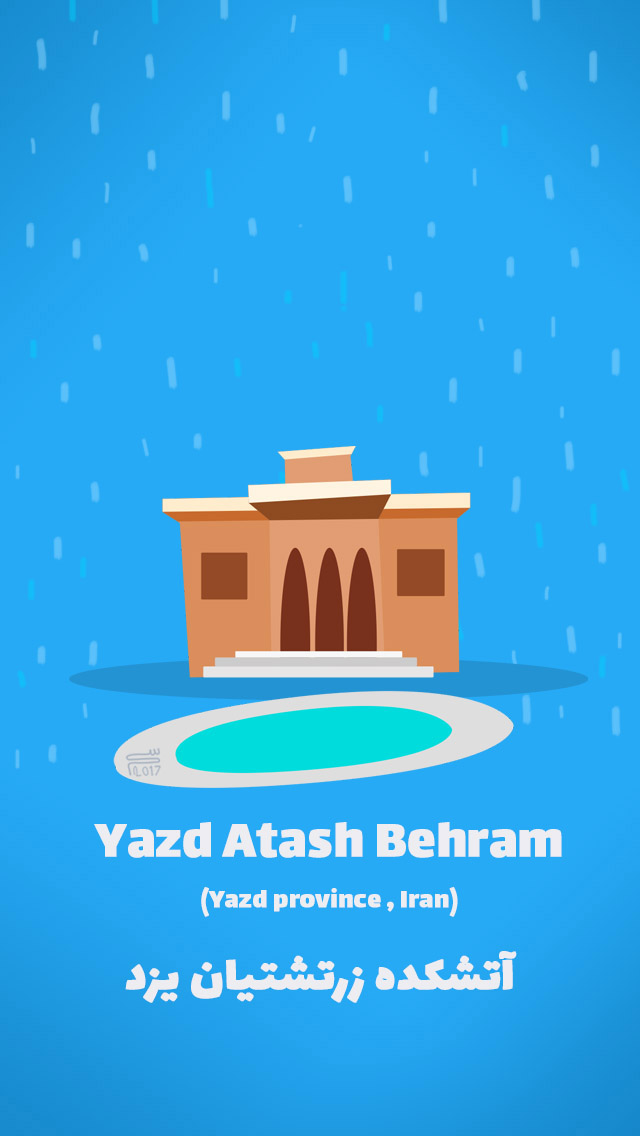
The Yazd Atash Behram, also known as Yazd Atash Kadeh), is a temple in Yazd, Yazd province , Iran. It was built in 1934 and enshrines the Atash Bahram, meaning “Victorious Fire”, dated to 470 AD. It is one of the nine Atash Behrams, the only one of the highest grade fire in Iran where Zoroastrians have practiced their religion since 400 BC; the other eight Atash Behrams are in India.
According to Aga Rustam Noshiravan Belivani, of Sharifabad, the Anjuman-i Násirí (elected Zoroastrian officials) opened the Yazd Atash Behram in the 1960s to non-Zoroastrian visitors.

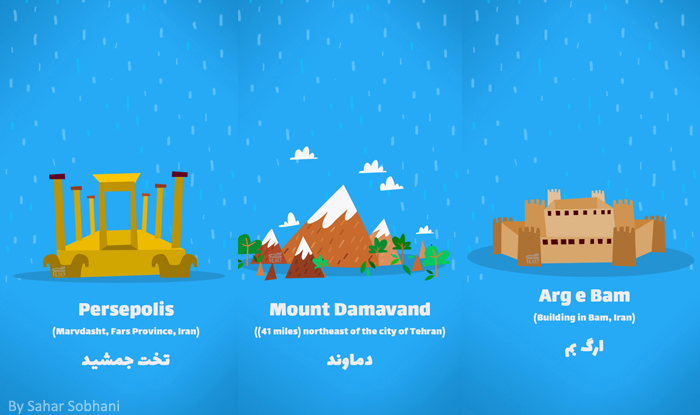
Recent Comments